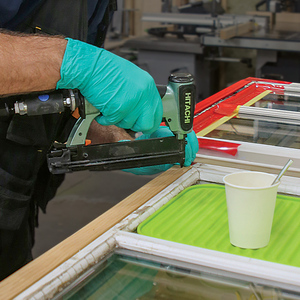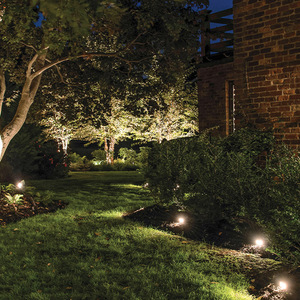Does anyone have a suggested detail for installing a concrete slab porch against an existing wood frame house? I have a client who is interested in doing this, although I have advised against it. The mud sill is already too close to the ground or underground in areas and some of the rim joists have rotted as you’d expect.
In this case, the client wants the top of the slab to be about 4″ to 6″ below the existing first floor finish material. This means the slab will be up against the rim joist. Is there a flashing material strong and durable enough to allow this?
I have another client interested in building a porch with a concrete floor against their existing brick house. Again, I welcome suggestions.
Thank you.



















Replies
For the first house...are you going to include in your scope of work to replace the rotted rim joists?
I would suspect that, after the rotted wood is replaced, you could form three sides of the slab, and put a 1" thk layer of rigied foam insulation against the house for the fourth side. The foam will have enough give later to cushion the slab-house connection, and the rim joist should be sufficient to hold the wet concrete in place. After it cures, scrape out a bit of the foam and caulk it with a good elastomeric material...the foam can act as the backer rod.
For the brick house, it's a little easier. All the houses here are concrete slab on grade, most are brick veneer, and for the patio slabs they just throw a piece of black sidewalk expansion strip against the house and pour. After a year or so the concrete shrinks enough to leave a gap and it looks ugly.
Do it right, or do it twice.
Ditto Elcid's suggestions.
Do replace the rotted rim joist...I'd use treated lumber for that repair. Do make sure to put a slight slope on the slab so the rainwater runs away from the house so as to prevent future damage. The rim joist alone should easily hold the concrete, but the ridgid insulation ( such as Dow Chemical's "blue-board") is a good recommendation...I would do it that way.
Last year I poured a small sidewalk slab against a brick veneered house. I cut an opening through the brick and block and installed a new door entry for this client. I used 1/2 inch thick, termite shield ridgid foam that framers usually lay down before installing the mudsill ( the stuff that is either blue or pink and comes in a roll). As ElCid suggested, I poured the sidewalk, then went back and trimed off the exposed foam. I used a urethane caulk (NPT-1) and caulked the joint. So far, no problems with that job; but instead I would recommend just using 1inch ridgid foam against the veneer, and do the same sort of thing...pour the slab, cut off the exposed insul, and caulk joint with a good urethane caulk to keep out water infiltration.
If you want something a bit more "substantial" as a backer for the brick veneer, use a piece of 5/4 deck board, or better yet, use a 3/4 piece of Trex or some other deck substitute that will not rot. ( The top of this board could be left exposed. If the concrete later starts to shrink away, then caulk the joint. )
Unless this slab is very thick, there will hardll be any real pressure put against the brick wall. The asphalt strips are generally used in this application, but as ElCid pointed out ( and rightly so) the asphalt strips start working their way up and look pretty bad.
Concerning the brick house, one thing you need to consider is whether you will be covering up existing weep holes with the new slab. You may need to go back and drill a few small weep holes in between the brick's mortar joints so as to let the water run out onto the top of the slab. Failure to do this could cause water from behind the wall to build up and cause the slab to crack; especially during winter months.
Just my 2 cents.
LOL.
Davo
Edited 7/17/2003 1:02:50 AM ET by Davo